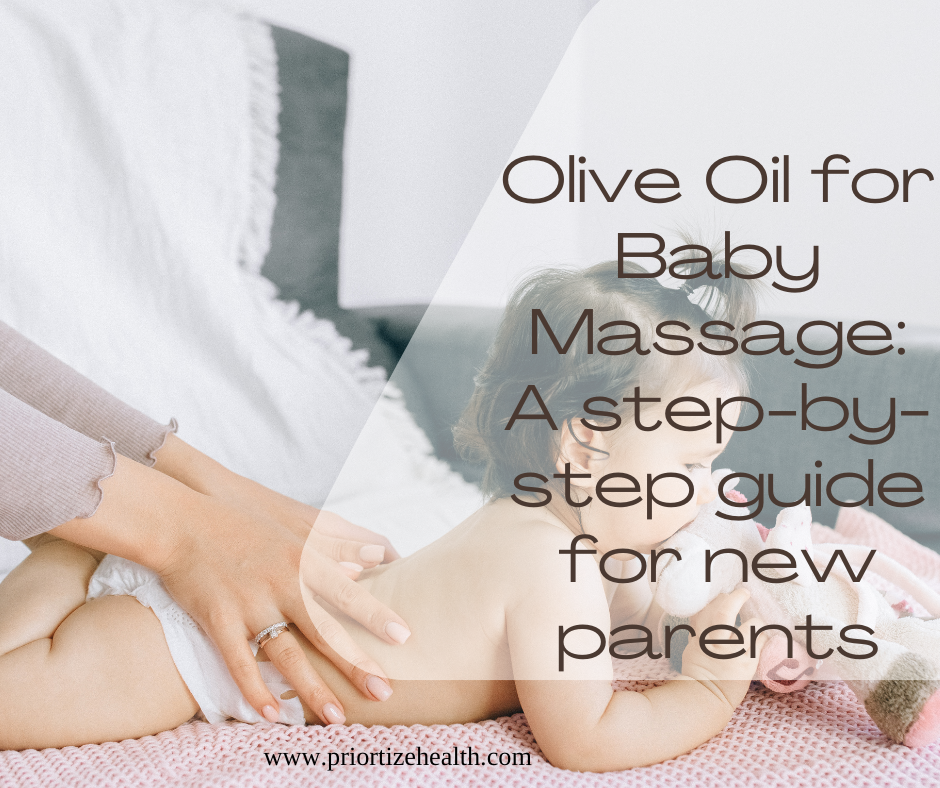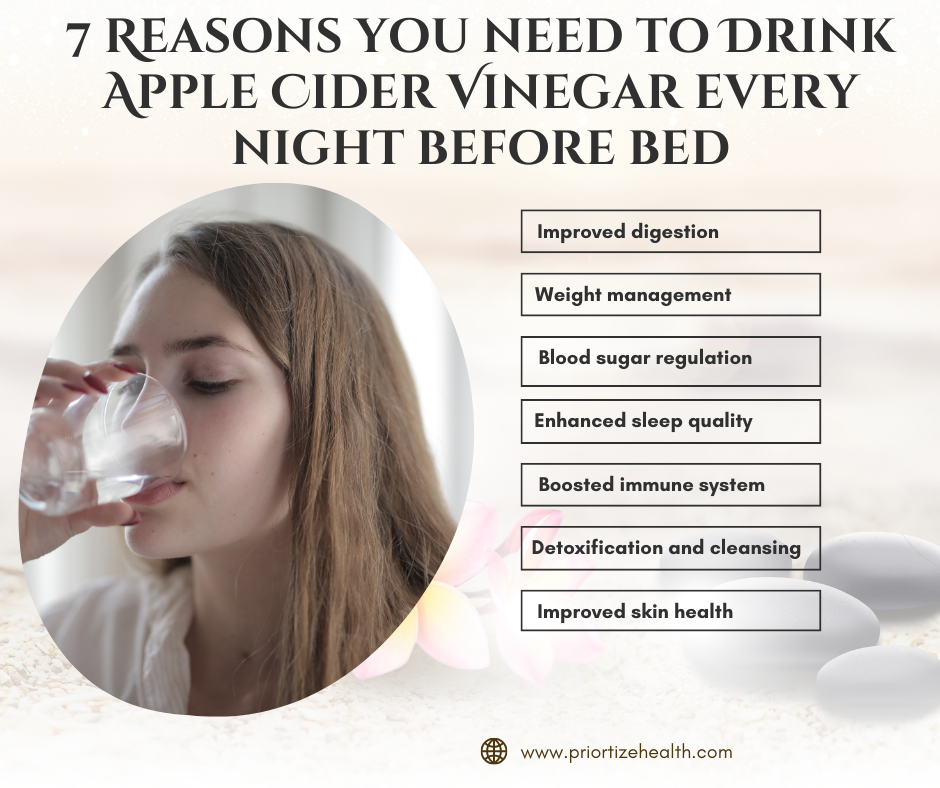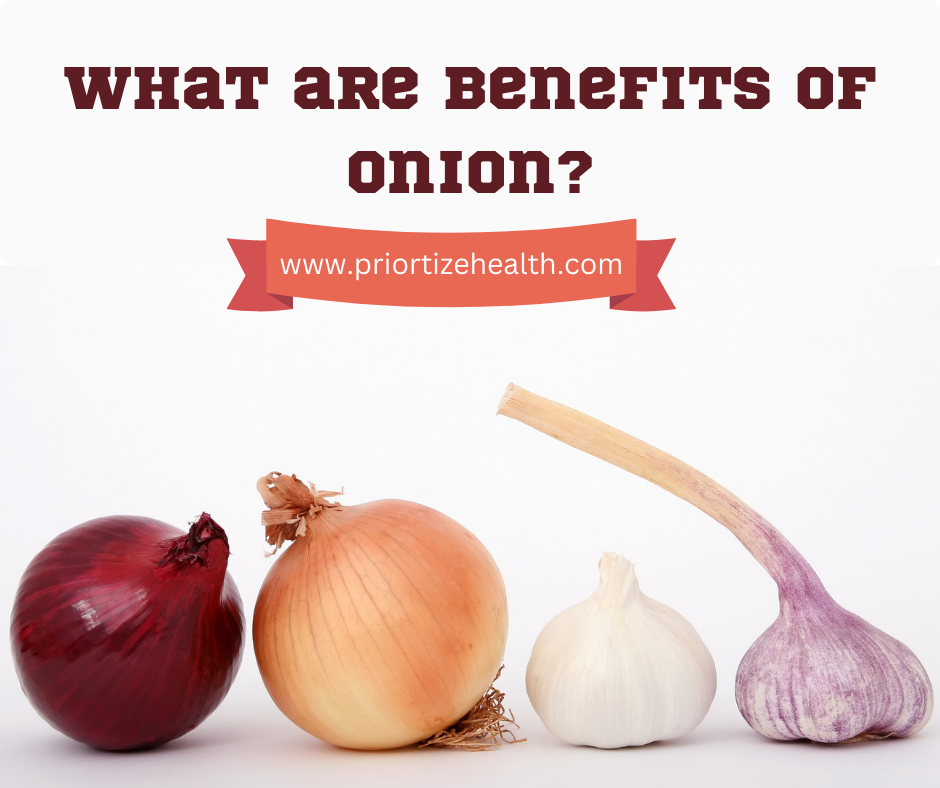
Olive Oil for Baby Massage: A step-by-step guide for new parents
Welcoming a new-born into the world is a euphoric and extraordinary experience for any parent. As you cradle your precious little one in your arms, a deep desire to nurture and protect them washes over you. In these early stages of life, touch and bonding play a crucial role in a baby’s development and well-being. One beautiful and time-honoured way to foster this connection is through the ancient practice of baby massage. Baby massage is more than a relaxing activity. It is an opportunity for parents to communicate love, care, and affection to their infants in a tangible and soothing manner.
The gentle strokes and tender touches involved in baby massage have many benefits for both the baby and the parent. It fortifies the bond and promotes a feeling of security and trust. When it comes to choosing the perfect oil for your baby’s massage, one natural option stands out above the rest – olive oil. For generations, people cherish olive oil for its culinary qualities and nurturing properties on the skin. In this step-by-step guide, we will investigate the miracles of involving olive oil for baby massage. The oil has rich nutritional properties to the art of creating a loving and safe massage routine for your little one.
Understanding the Benefits of Olive Oil for Baby Massage
As parents, we always strive to give the best consideration and comfort for our little ones, particularly with regards to their delicate and sensitive skin. Olive oil, with its centuries-old reputation for nourishment and healing, has emerged as a popular choice for baby massage. We should dig into the benefits of using olive oil for this nurturing practice:
1. Gentle and Nourishing for Delicate Skin:
Many parents choose olive oil for baby massage for its gentle nature. Olive oil is rich in natural fatty acids, such as oleic acid, which resemble the oils produced by a baby’s skin. This similarity allows for easy absorption, helping to moisturize and nourish the skin. There is no irritation or clogging of pores.
2. Maintaining the Skin’s Natural Barrier:
The outermost layer of a baby’s skin is known as the skin barrier. It plays a significant part in safeguarding against outer irritants and preventing moisture loss. Olive oil helps builds up this barrier. It creates a shield that safeguards the skin from environmental stressors and maintains its softness.
3. Antioxidant and Anti-Inflammatory Properties:
Olive oil contains powerful cancer prevention agents, including vitamin E and polyphenols. They help to combat oxidative stress and inflammation. These natural compounds can reduce the risk of skin damage and soothe any minor skin irritation.
4. Calming and Soothing Effects:
The act of massaging your baby with olive oil can have a calming and relaxing effect on both the baby and the parent. The gentle strokes and the skin-to-skin contact release oxytocin. It provides the “feel-good” hormone, promoting a sense of tranquility and strengthening the bond between parent and child.
5. Potential Relief for Skin Conditions:
For babies prone to mild skin conditions like dryness or eczema, olive oil may offer some relief. Its moisturizing properties can help reduce dry patches and soothe irritated skin. Yet it’s essential to consult a pediatrician before using any oil on affected areas.
6. Chemical-Free and Natural Choice:
Many commercial baby oils contain additives and fragrances. They may not be suitable for a baby’s sensitive skin. An extra-virgin olive oil provides a chemical-free and natural alternative. It gives parents peace of mind realizing they are utilizing a safe product on their baby’s skin.
7. Cost-Effective and Readily Available:
Olive oil is readily available in most households. This makes it a practical decision for baby massage. There’s no need to invest in costly, specialized items when you have this versatile and wholesome oil within reach.
Preparing for the Massage
We should take the time to prepare and create a safe and comfortable environment. Here’s a step-by-step guide on the most proficient method to prepare for the massage:
1. Choose the Right Type of Olive Oil:
Choose extra-virgin, cold-pressed olive oil. It retains more of its natural nutrients and is free from chemical additives. This high-quality oil ensures that your baby receives all the nourishing benefits. The oil does not contain any harmful substances.
2. Perform a Patch Test:
Prior to applying olive oil all around your baby’s skin, conduct a patch test. Apply a limited quantity of olive oil on a small area, like the forearm, and observe for any signs of irritation or allergic reaction. Assuming that there are no unfavourable impacts following 24 hours, it ought to be safe to proceed with the massage.
3. Create a Warm and Peaceful Atmosphere:
Find a quiet and warm room in your home. Your baby should be able to lay in a comfortable manner. Dim the lights and play some soft and soothing music if you like. Attempt to remove any potential distractions to make the experience as could really be expected.
4. Keep Everything within Reach:
Once you begin the massage, you’ll want to keep one hand on your baby at all times. So, lay out all the necessary items within arm’s reach, such as the olive oil, a towel or changing mat for any potential mess. Keep a spare diaper or clothing in case you need to dress your baby afterward.
5. Wash Your Hands:
Cleanliness is essential when handling your little one. Before you start the massage, clean your hands with cleanser and warm water. This step helps prevent the transfer of germs or dirt to your baby’s sensitive skin.
6. Trim Your Nails:
Trim your fingernails and keep them smooth to avoid scratching your baby during the massage. Babies’ skin is delicate, and even the slightest scratch can cause discomfort.
7. Dress in Comfortable Clothing:
Wear loose, comfortable clothing during the massage session. This allows you to move in a free manner and maintain a relaxed atmosphere for both you and your baby.
8. Keep a Happy and Relaxed Demeanor:
Babies can sense their parents’ emotions. Approach the massage with a happy and calm demeanor, as your relaxed state will help your baby feel at ease and enjoy the experience.
Step-by-Step Guide to Olive Oil Baby Massage
Now you’re well-prepared and eager to embark on the olive oil baby massage journey. So, let’s delve into the step-by-step guide for this nurturing and bonding experience:
Step 1: Find the Right Time:
Select a time when your baby is calm, content, and not too hungry or full. Avoid massaging immediately after a feeding, as a full tummy might make your baby uncomfortable during the process. Choose a time when both you and your child feel relaxed and free from distractions.
Step 2: Undress Your Baby:
Lay your baby down on a soft, comfortable surface, such as a towel or a changing mat. Undress them down to their diaper to allow for easy access to their skin during the massage. If the room is cool, ensure the space is comfortable and warm to prevent your baby from getting cold.
Step 3: Take a Small Amount of Olive Oil:
Pour a small amount of extra-virgin olive oil into your hands, and rub them together to warm the oil. The warmth enhances the soothing sensation for your baby and helps the oil spread in a smooth manner on their skin.
Step 4: Begin with Gentle Strokes:
Start in a gentle manner massaging your baby’s legs with long, smooth strokes from their thighs down to their feet. Use light pressure and notice your child’s response to ensure they are comfortable with the touch.
Step 5: Move to the Arms:
After massaging the legs, move on to your baby’s arms. Again, use gentle strokes, starting from the shoulders and moving down to their tiny hands.
Step 6: Caress the Tummy:
With your baby lying on their back, place your hands in a gentle manner on their tummy. Make small, circular movements with your hands in a clockwise direction. This motion can aid digestion and provide a comforting sensation.
Step 7: Massage the Chest and Shoulders:
Use gentle strokes to massage your baby’s chest and shoulders. Be careful around the sensitive neck area and try not to apply an excessive amount of pressure.
Step 8: Explore the Back:
Turn your baby onto their tummy and massage their back with gentle, flowing strokes. Stroke from the neck down to the buttocks, being extra careful around the spine area.
Step 9: Observe and Communicate:
Throughout the massage, maintain eye contact with your baby. Communicate with soothing words or do gentle humming. This reassures your baby of your presence and fosters a sense of security.
Step 10: Pay Attention to Cues:
Watch for signs of discomfort or restlessness during the massage. If your baby becomes fussy or starts squirming, it might be a sign that they’ve had enough or need a break. Always be responsive to your baby’s cues and adjust the massage.
Step 11: Complete the Massage:
Once you’ve completed the massage, wipe off any excess oil with a soft towel in a gentle manner. Dress your baby in clean clothes and enjoy some cuddle time to further strengthen your bond.
Step 12: Repeat and Make It a Routine:
As your baby grows, you can continue with the olive oil massages. Increase the duration of the massage in a gradual manner. Explore variations in the strokes to suit your baby’s changing needs.
Safety Considerations
Ensuring the safety of your baby is of utmost importance during any activity, including baby massage. Here are some essential safety considerations to remember while using olive oil for baby massage:
1. Patch Test:
Before you start utilizing olive oil for baby massage, always perform a patch test on a small area of your baby’s skin. This helps to recognize any potential allergic reactions or skin sensitivities to the oil. If any redness, irritation, or rash occurs, stop using immediately and consult a pediatrician.
2. Avoid Sensitive Areas:
Be cautious when massaging around sensitive areas like the eyes, nose, mouth, and private parts. We should not apply olive oil to these regions as it might cause irritation or discomfort.
3. Use Gentle Strokes:
Always use gentle, light strokes during the massage. Avoid applying excessive pressure or force, as a baby’s skin is delicate and can bruise.
4. Choose the Right Time:
As referenced prior, choose a time when your baby is calm and content for the massage. Try not to massage your baby immediately after a feeding, as this might lead to discomfort or spit-up.
5. Be Responsive to Cues:
Focus on your child’s cues during the massage. On the off chance that your child becomes fussy, uncomfortable, or agitated, stop the massage and comfort them. Not all babies will enjoy a full-length massage, and that’s okay. The key is to make it a positive and pleasant experience for your baby.
6. Check for Slips and Falls:
Ensure that the surface on which you are massaging your baby is stable and secure. In the event that you are utilizing a changing table, always keep a hand on your baby to prevent any accidental falls.
7. Avoid Massaging Sick or Injured Babies:
If your baby is unwell, has a fever, or is recovering from an injury, avoid massaging them until they recover.
8. Be Mindful of Allergies:
You or your family may have a history of allergies to olive oil or any other ingredient. In such cases, it’s best to consult a pediatrician before using it for baby massage.
9. Store Olive Oil in a Proper manner:
Keep your olive oil in a cool, dark place, away from direct sunlight. Ensure that you seal the bottle in a tight manner to maintain its freshness and quality.
10. Use Pure Olive Oil:
Stick to pure, extra-virgin, cold-pressed olive oil for baby massage. Try not to utilize olive oil blends or those with added fragrances, as they might contain allergens or irritants.
11. Keep an Eye on the Expiry Date:
Check the expiry date of the olive oil before using it for baby massage, and avoid using expired oil.
12. Seek Professional Advice if Needed:
You may have any concerns or questions about using olive oil for baby massage. There are chances that your baby has pre-existing skin conditions. In all such cases talk with a pediatrician or a medical care proficient for customized guidance.
Overcoming Common Challenges
Olive oil baby massage can be a delightful and rewarding experience. But it’s natural to encounter some challenges along the way. Here are common challenges that parents might face during the process along with tips on the most proficient method to overcome them:
1. Restlessness and Fussiness:
Some babies may feel restless or fussy during the massage, especially if they are not used to the sensation or if they are very tired. To overcome this, start with shorter massage sessions. Increase the duration in a progressive way as your child turns out to be more familiar with the daily practice. Be mindful of your baby’s cues and take breaks as needed.
2. Skin Sensitivities:
Babies’ skin can be sensitive. Some may experience mild reactions to new products, including olive oil. On the off chance that you notice any redness or irritation after the massage, stop utilizing it and counsel a pediatrician. Consider using a different type of oil or exploring other baby-safe massage products.
3. Distractions:
Babies are curious little beings. They may get distracted during the massage by their surroundings or sounds. Create a calm and soothing environment by dimming the lights or playing soft music. You can use white noise to reduce distractions and help your baby relax.
4. Timing Issues:
Choosing the right time for the massage is essential. Avoid massaging your baby when they are hungry, too full, or when they need a diaper change. Opt for a time when your baby is content and relaxed, like after a rest or before sleep time.
5. Lack of Cooperation:
As your baby grows and becomes more mobile, they may resist lying still during the massage. Try incorporating interactive elements, such as singing lullabies. You can also use a soft toy to engage their attention while you massage. The other option is to try for a diaper-area massage while your baby is lying on their back. This makes it easier for them to kick and move their legs.
6. Uncertainty about Techniques:
For new parents, mastering the art of baby massage can take time. Take advantage of online resources and videos. You can also attend local baby massage classes to learn different techniques and gain confidence in your skills.
7. Temperature Concerns:
Ensure that the room temperature is comfortable and warm enough during the massage. Keep your baby’s body covered with a light cloth or blanket if needed. Use a gentle touch to prevent them from feeling too cold during the process.
8. Timing the Massage with Daily Routine:
Finding the right time to fit the massage into your daily routine can be challenging. Try to make it a consistent part of your baby’s bedtime or post-bath routine, as this can create a calming and relaxing transition to sleep.
Keep in mind, each child is unique, and what works for one may not work for another. The key is to be patient, flexible, and attuned to your baby’s needs and preferences. Baby massage should be a positive experience for both you and your little one. It promotes bonding, relaxation, and well-being. Adjust the massage routine or seek support from fellow parents or healthcare professionals if you encounter any challenges along the way.
Building a Bond Through Massage
Baby massage goes beyond the physical benefits. It is an incredible asset for building a strong and loving bond between parents and their little ones. The act of gentle touch and skin-to-skin contact during the massage fosters emotional connection. It likewise promotes a sense of security and trust. We should investigate how baby massage can help build a meaningful bond between you and your baby:
1. Enhanced Communication:
During the massage, you and your baby engage in non-verbal communication. It is through touch, eye contact, and soothing sounds. This direct and loving interaction helps your baby feel seen, heard, and understood. This reinforces the attachment between you both.
2. Release of Oxytocin:
The physical contact and emotional closeness experienced during baby massage stimulate the release of oxytocin. It is often referred to as the “love hormone” or “bonding hormone.” Oxytocin plays a vital role in strengthening the emotional bond between parents and their babies. This creates feelings of warmth and affection.
3. Improved Parent-Child Understanding:
As you massage your baby, you become more attuned to their cues and signals. This heightened awareness allows you to better understand your baby’s needs and respond to them. It builds a deeper sense of connection and mutual understanding.
4. Relaxation and Stress Reduction:
Baby massage not only relaxes the baby but also the parent. When both of you are calm and at ease, the interaction becomes more enjoyable and fosters a positive atmosphere for bonding.
5. Shared Moments of Joy:
The massage experience provides special moments of joy and pleasure for both you and your baby. These shared moments strengthen the emotional bond. It can create positive associations with touch and physical closeness.
6. Establishing Trust:
Through the nurturing touch of massage, your baby learns to trust you as their caregiver. This trust forms the foundation for a secure attachment and a healthy parent-child relationship in the long run.
7. Promotion of Healthy Sleep:
Regular baby massage helps to improve sleep patterns for babies. A well-rested baby is joyful and more receptive to bonding activities during waking hours.
8. Opportunity for Dads and Other Family Members:
Baby massage is not exclusive to mothers. It provides an excellent opportunity for dads and other family members. They take part in the care and bonding process with the baby.
9. Routine and Predictability:
Incorporate baby massage into your daily routine. It establishes a sense of predictability and security for your little one. As they come to expect this comforting ritual, it can help soothe them during times of fussiness or distress.
10. Lasting Memories:
Baby massage creates beautiful memories that you and your child will cherish for years to come. The bond formed during these early experiences can lay the groundwork for a lifetime of love and closeness.
FAQ’s:
Ans: Yes, olive oil is generally considered safe and beneficial for baby massage. Olive oil is gentle and absorbs in an easy manner, making it suitable for a baby’s delicate skin. It provides moisturizing effects and supports the skin’s natural barrier. The oil contains antioxidants that can soothe and nourish the skin. The act of massaging with olive oil promotes bonding and relaxation. There can be emotional connection between parent and baby. In any case, it’s essential to perform a patch test prior to utilizing it. If any adverse reactions occur, stop using it and seek medical advice. Always choose pure, extra-virgin, cold-pressed olive oil for baby massage. You should be mindful of your baby’s cues and comfort during the massage.
Ans: We can use olive oil at room temperature for baby massage. It is neither hot nor cold but should be little warm. Check by rubbing it between your hands prior to applying it to your baby’s skin. Using olive oil at room temperature ensures a comfortable and soothing massage experience for your baby. Avoid using hot or cold olive oil, as extreme temperatures can be uncomfortable or even harmful for your baby’s delicate skin. Always aim for a gentle and warm application of olive oil during baby massage.
Ans: One of the best oils for baby massage is pure, extra-virgin, cold-pressed olive oil. Olive oil is gentle, absorbs in an easy manner, and rich in nutrients that are beneficial for a baby’s delicate skin. It provides moisturizing effects and supports the skin’s natural barrier. The oil contains antioxidants that can soothe and nourish the skin.





